24 hours that crumbled decades-old “den of poison” Commentary on President Aliyev’s recent remarks
President Ilham Aliyev gave a broad insight into the existing situation in the region, the counter-terrorist measures of the Azerbaijan Armed Forces in the Garabagh region, and the realities that surfaced following the successful completion of the anti-terror campaign.
He presented a series of facts that set the grounds for Azerbaijan to disable the formations of the Armenian military in Garabagh, including the staggering provocations, sabotage attempts, and mine terror.
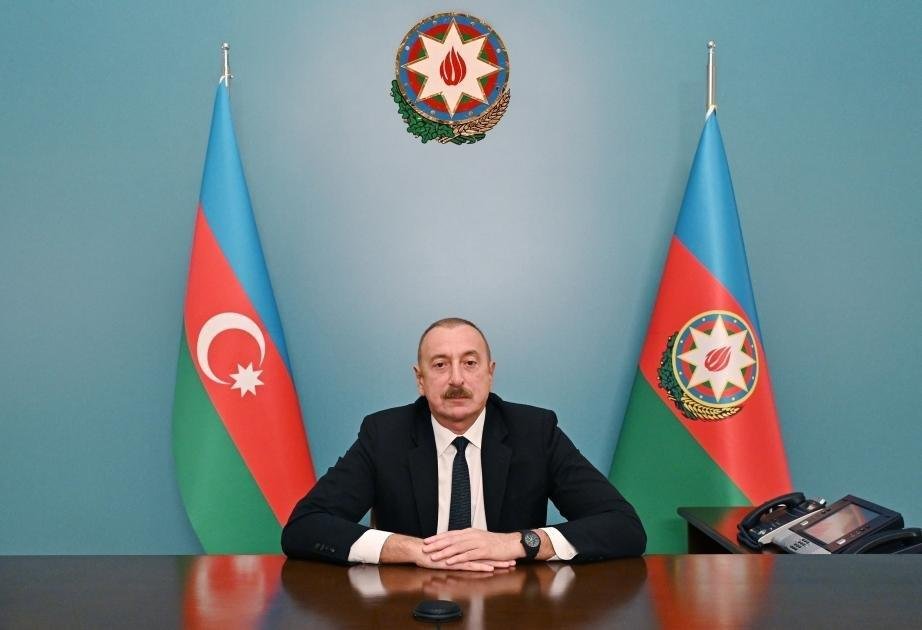
- President Aliyev: “Due to a terrorist act committed by the Armenian armed forces, six Azerbaijani citizens - two civilians, became victims of a mine terror. It is not the first time that Armenia has committed a terrorist act against us. Since the end of the Second Karabakh War, more than 300 Azerbaijani citizens have become victims of mine terrorism or have been seriously injured … Contrary to the Trilateral Statement of November 10, 2020, Armenia did not withdraw its armed forces, manpower, and equipment from our territory for three years. However, during numerous contacts with the leadership of Armenia and from the high rostrums of international events, I repeatedly turned to this issue. I expressed my rightful dissatisfaction of the Azerbaijani state. The November 10 Trilateral Statement was an act of capitulation of the Armenian state, and according to this act of capitulation, Armenia had to withdraw its armed forces from all Azerbaijani territories. But it refused.”
Armenia undertook legally binding obligations to withdraw its troops from the Azerbaijani lands after the 44-day war of 2020. Article 4 of the Trilateral Statement signed by Armenian PM Nikol Pashinyan clearly stated that Karabakh was no more a territory for deploying armed personnel of a foreign state. The situation in the region should have been monitored by the temporary Russian peacekeeping mission by 2025 to safeguard the fragile ceasefire from destructive foreign impact, according to the statement.
However, Armenia failed to abide by its obligations. Over the past three years, Yerevan emboldened its troops in the Azerbaijani lands through constant military and financial supplies.
According to the recent reports of the Azerbaijani government, before the anti-terror measures, there were ten thousand strong manpower, more than one hundred tanks and other armoured vehicles, over two hundred heavy artillery pieces, including multiple rocket launchers, dozens of radio-electronic warfare equipment, as well as at least two hundred mortars at the disposal of the Armenian troops illegally stationed in the Azerbaijani territories temporarily monitored by the Russian peacekeepers.
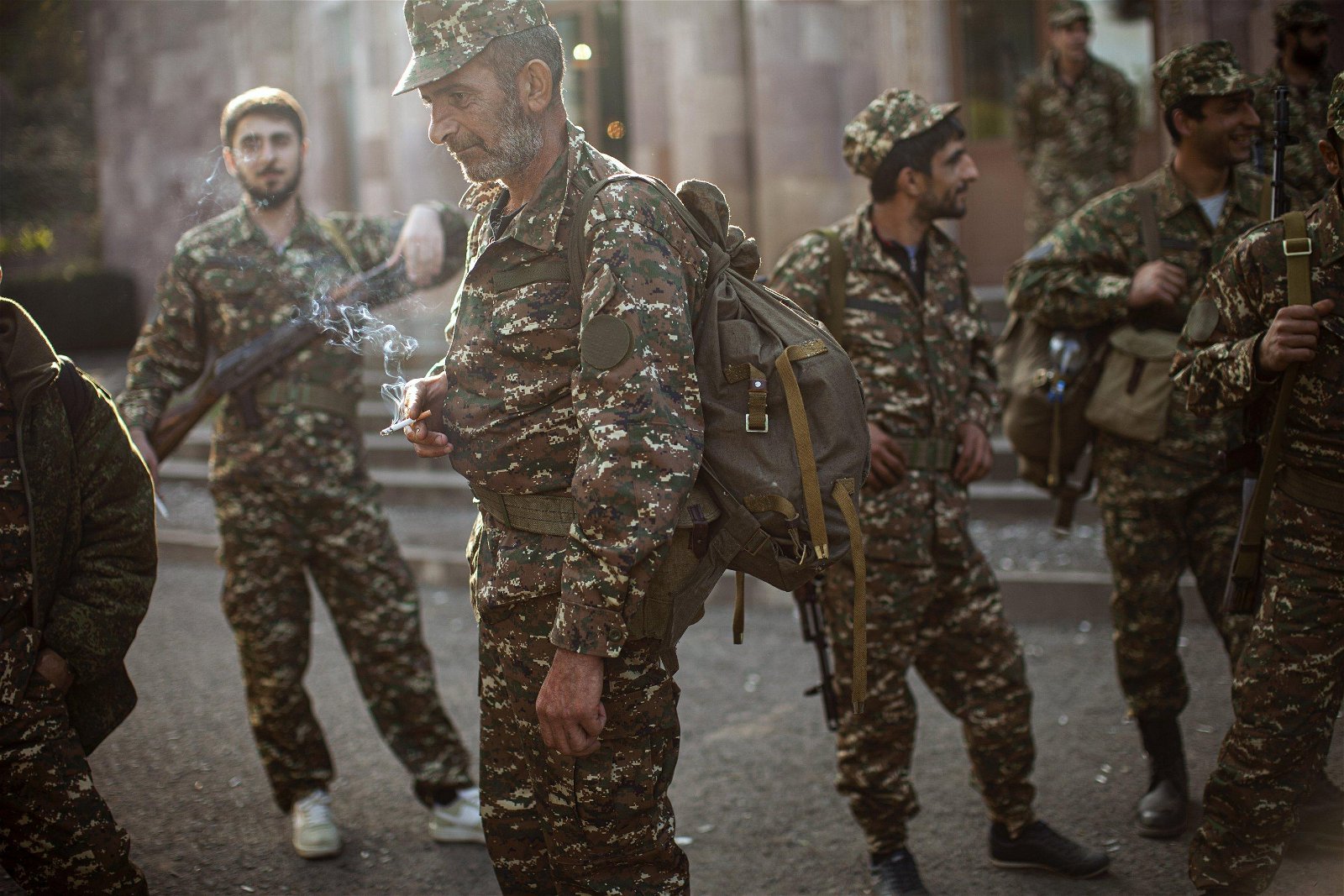
The illegal presence of the Armenian troops within Azerbaijan’s borders was not the single source of threat against Azerbaijan given the ongoing mine terror. Armenian landmines continued to claim the lives of Azerbaijanis in the liberated lands since the end of the 44-day war in 2020.
According to the Azerbaijani government’s data, from November 10, 2020 – September 19, 2023, a total of 314 Azerbaijanis have been trapped in landmine explosions, of which 61 lost their lives and 253 got injuries. Among casualties, 48 civilians lost their lives and 101 suffered injuries of varying degrees. The death toll and injuries among the military personnel as a result of mine accidents stand at 13 and 152, respectively.
Despite significant demining operations by Azerbaijan, the mine threat remains at an alarming level primarily due to Armenia’s refusal to provide maps indicating the locations of landmines. Azerbaijan obtained minefield maps of the liberated Aghdam, Fuzuli, and Zangilan districts, which reportedly identify the coordinates of 189,000 anti-tank and anti-personnel mines.
Additionally, Armenia provided minefield maps of other liberated territories of Azerbaijan, but all these maps were found to be just 2 per cent effective in mine action by ANAMA, the Azerbaijani National Agency for Mine Action.
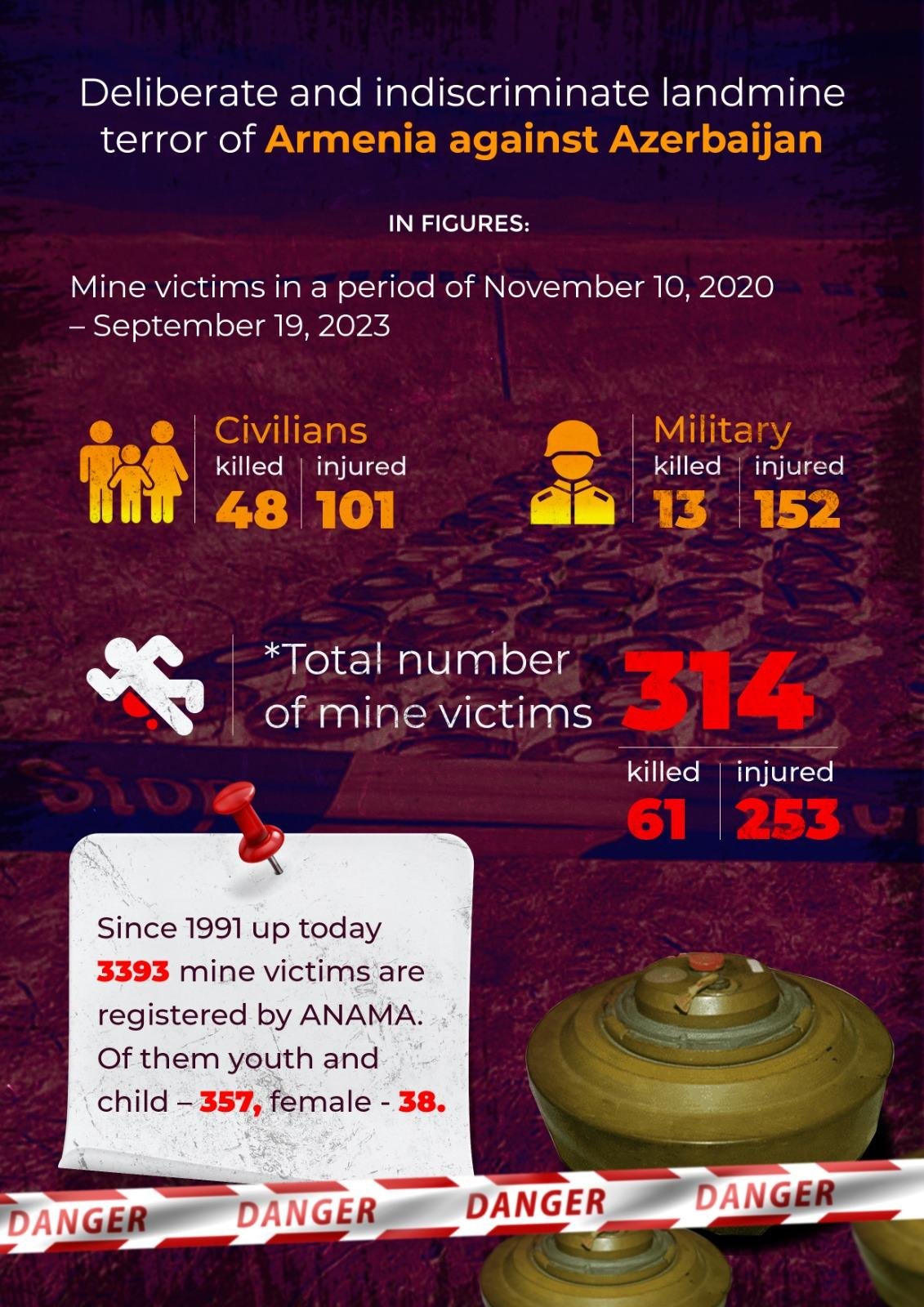
Moreover, since 2020, the Armenian saboteurs in Garabagh contaminated the liberated territories with more mines, including those of 2021 Armenian production. The latest of the multiple deadly mine explosions took place on September 19 killing four police officers and two road constructors from Azerbaijan in the Khojavand district.
Patience has limits. Diplomacy, too. The one-day counter-terrorist measures in Garabagh were the ultimate response of Azerbaijan to suffocate the hotbed of danger to its sovereignty. The resistance of the Armenian army formations, which caused manpower losses in the Azerbaijan Armed Forces, testified to the just and timely nature of the measures taken by Azerbaijan. More tolerance could lead to more dire consequences.
The outcome of the anti-terror campaign was precisely briefed by President Aliyev: “Azerbaijan regained its sovereignty.”
- President Aliyev: And now, I am sure that the emergence of a new situation in our region is inevitable. After the surrender of the criminal junta, this source of tension, this den of poison, has already been consigned to history. The Armenian population of Karabakh can finally breathe a sigh of relief. I said this before, and I want to repeat it: the Armenian population of Karabakh are our citizens. Armenian nationalists, war criminals, and the so-called leaders of Armenia and Karabakh took these people hostage and poisoned their brains. They concocted endless lies about Azerbaijan and its people, stuffed their brains, and poisoned them. I am sure that the Armenian population living in Karabakh will soon see a change for the better. We intend to build a life together based on peace, mutual understanding, and mutual respect. We have no problems with the Armenian people. We have no enmity.
Garabagh is currently ushering in an all-new era. Free of terrorists, illegal armed formations, weapons, and separatists. The withdrawal of the Armenian troops and the collapse of the Armenia-backed self-designed “republic” in the region is paving the way for peace to take the reins. The South Caucasus is going to shift from a conflict-torn geography into a centre of peace.
Of course, the peacebuilding process will proceed in line with the conditions set by Azerbaijan, to which the 25,000 Armenian population of Garabagh agreed. Azerbaijan hosted the representatives of Garabagh’s Armenian community to put forward its proposals for peaceful coexistence and also listen to their thoughts about their future life as citizens of Azerbaijan. Baku is not forcefully dictating its hegemony. Mutual understanding and respect, mentioned by President Aliyev in his recent address to the nation, are making pillars of the reintegration of the Armenian minority.
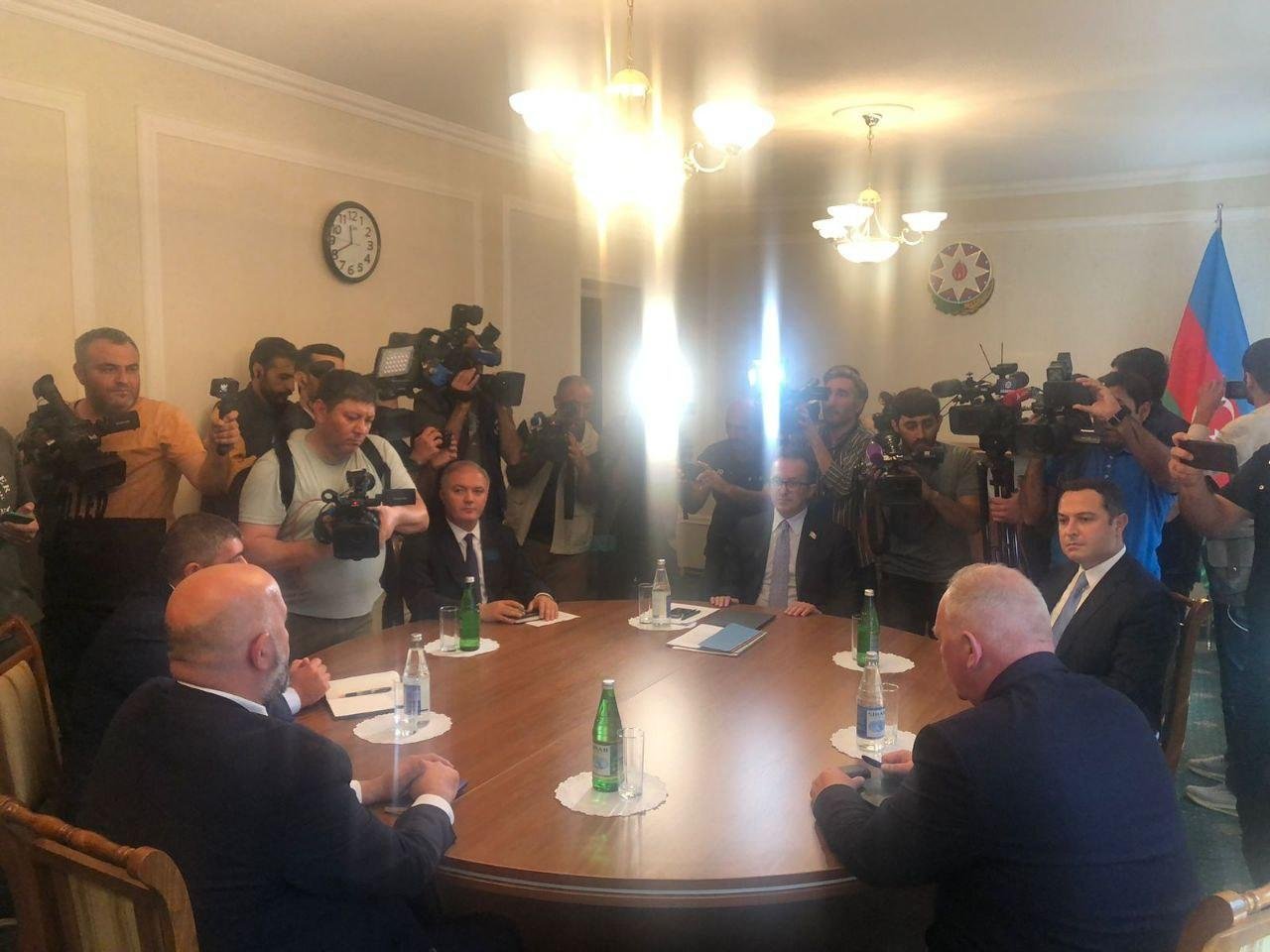
Azerbaijan has been applying a model of reintegration in its liberated lands since 2020. The reintegration of the former IDPs into their good old days that were stolen by Armenia in 1991-1994. Zangilan, Fuzuli, Lachin, and Tartar have already welcomed its residents back after thirty years of forcible separation. Massive reconstruction spans every inch of the war-torn lands. The life is back to the “ghost towns” of Karabakh and East Zangezur.
- President Aliyev: “All their rights will be guaranteed: educational rights, cultural rights, religious rights, and municipal electoral rights because Azerbaijan is a free society. Azerbaijan is a multi-ethnic, multi-confessional state. It is our great asset. Representatives of every nationality living in Azerbaijan can see this. There is no need to explain that. It is our way of life. There has never been and will never be discrimination on religious and ethnic grounds in Azerbaijan, and the Second Karabakh War showed it again. Representatives of all nations, representatives of all ethnic groups, all confessions united as one fist - for Azerbaijan, for dignity, for the Motherland! Therefore, look at this beautiful atmosphere; this is a natural place, and we are inviting the Armenian population of Karabakh to enjoy it. We are ready to implement various social programs. We are rebuilding all of Karabakh and East Zangezur. Look how much we have done in just two years.”
Azerbaijan took the first steps to launch the reintegration of the Armenian population in Garabagh into the local society post-2020 war in March 2023. Back then, the minority’s representatives sat for talks with the special delegation from Baku in the Russian peacekeeping command’s headquarters in Garabagh. Encouraged by, if not obviously but slightly positive tone at the talks, the Azerbaijani authorities invited them for the second meeting in Baku.
However, a group of separatists meddled to derail the process. They have again come up with so-called status for the region’s Armenian population, demanding “independence” from Azerbaijan, a call that irritated Baku amidst the intensification of its reintegration agenda.
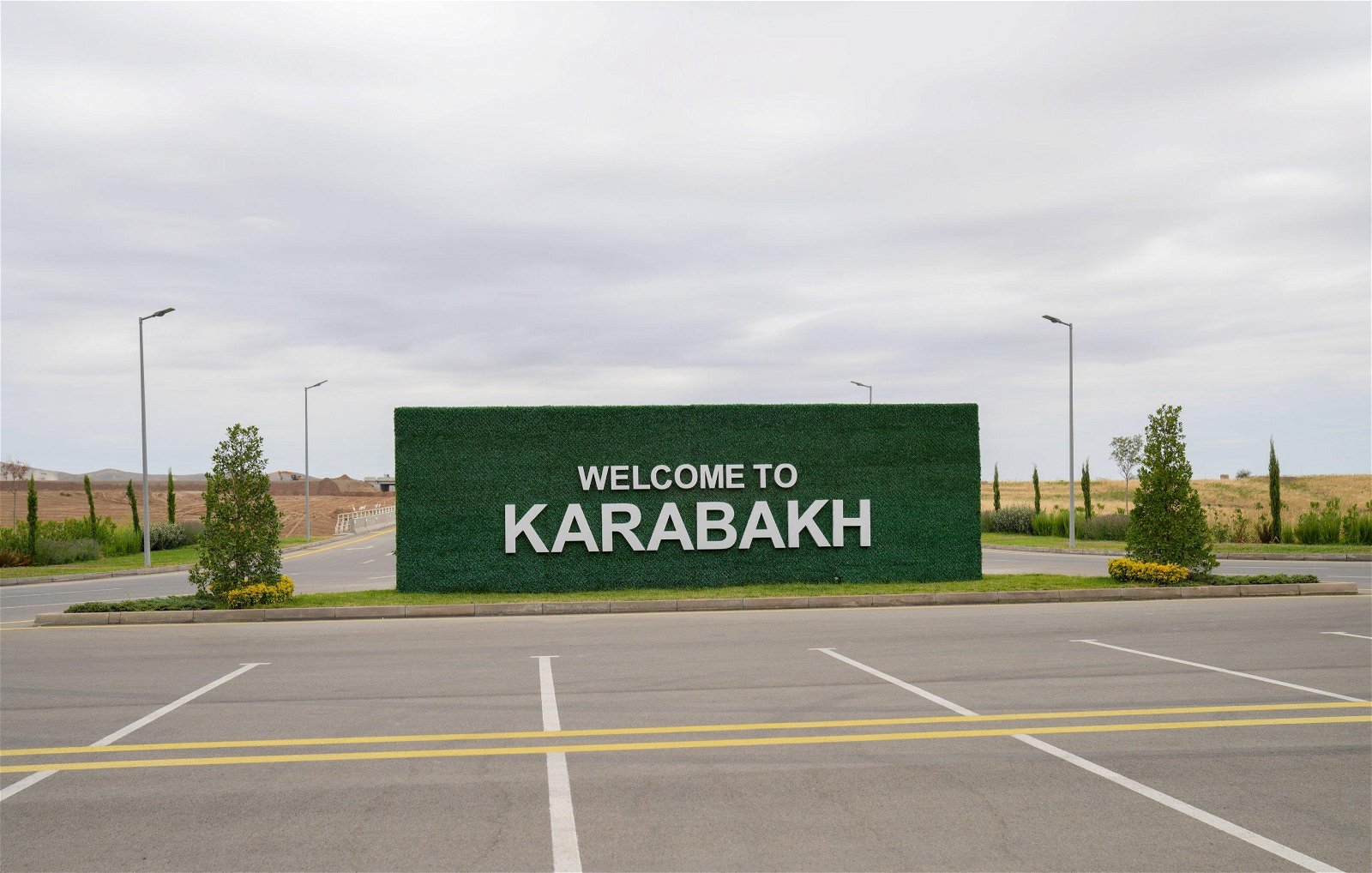
Now, the separatists in Garabagh have their pillars crumbled. The time has come to finally win the Armenian residents of Garabagh back into Azerbaijan’s multi-ethnic society. Ethnically motivated conflicts in Azerbaijan have never made headlines. And will never make it.
Multi-faith Azerbaijan is home to multiple nationalities: Talysh, Lezgi, Kurd, Avar, Udin, Ingiloy, Tat, Russian, Ukrainian, Armenian and more. They have all fundamental rights ensured. They speak and educate in their languages, they actively participate in socio-economic life building, and they have voting rights. Armenians of Karabakh are going to enjoy the same rights as the citizens of Azerbaijan – the strongest, largest, and wealthiest country in the South Caucasus region.
- President Aliyev: “We suggest that the forces, the fraudsters, and corrupt politicians sitting far from our region that pursue their political agenda and use the Armenian people as a tool and exploit them to leave us alone. Those who sit on the other side of the world and make groundless accusations against us should get their hands off us. Let the South Caucasus, this region, which has been a place of fighting, wars and bloody clashes for centuries, breathe easy,” the Azerbaijani president said.
The nations of the South Caucasus are quite competent to resolve differences without a foreign hand on their shoulders. Azerbaijan ended one of the world’s long-protracted conflicts in Karabakh three years ago. No one assisted the country in putting the fallen justice back in its place. The “My territory, my struggle, my fate” motto could well portray the actions of Azerbaijan from 2020. Today, there is no conflict between Baku and Yerevan. It has gone with no way back.
Foreign actors, who failed to fetch a diplomatic solution to it over nearly 30 years, should now support the post-conflict landscape instead of mudding the water. There is no room for another impotent “OSCE Minsk Group mediation”. The foreign supporters of Armenia should stop fueling separatist sentiments, and supplying arms in the region far from their geography.
There is no “Nagorno-Karabakh” to sit in their social media hysteria. There are no opportunities left for them to use for their political gains - for more “ticks” on election bulletins. There is a road to peace for peaceful minds. Others are not welcome.








